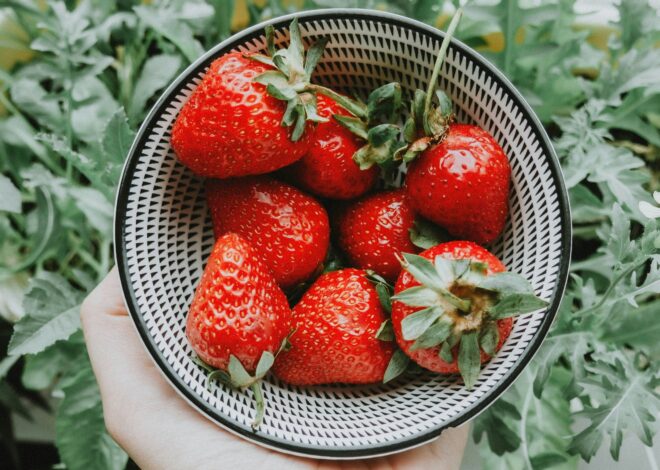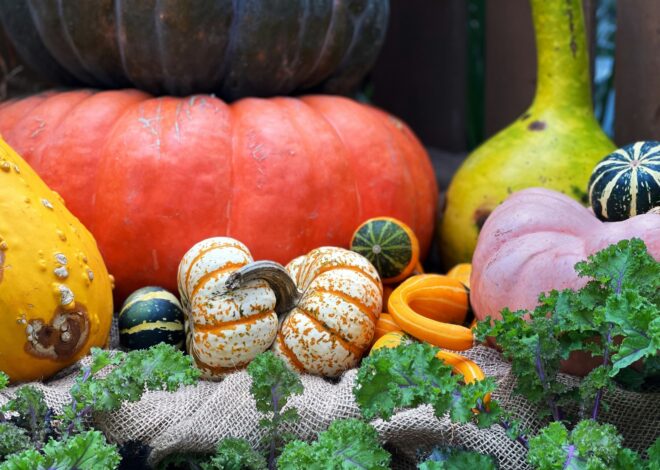
How To Grow Jalapeno Peppers
Welcome to our guide on how to grow jalapeno peppers. Jalapeno peppers are more than just a staple in spicy cuisines; they bring vibrant flavors and heat to countless dishes. Whether you’re adding them to salsas, grilling them for a smoky kick, or stuffing them with cheese, these little green gems pack a punch.
But why settle for store-bought when you can cultivate your own jalapenos right at home? Growing your own peppers allows you to enjoy fresh produce straight from the garden, tailored to your taste preferences. Imagine stepping into your backyard and plucking ripe jalapenos off the plant—there’s nothing quite like it!
Beyond the joy of gardening, growing jalapeños is surprisingly easy and rewarding. You’ll not only save money but also have full control over how they’re grown. So gather your tools and get ready! Let’s dive into how to grow jalapeno peppers that will elevate your culinary creations and impress friends and family alike.
Benefits of Growing Your Own Jalapeno Peppers
Growing your own jalapeno peppers comes with a plethora of benefits. First and foremost, there’s the joy of cultivating something from seed to harvest. Witnessing that transformation can be incredibly rewarding. Homegrown jalapenos are fresher than anything you’ll find in the store.
This freshness translates into vibrant flavors and essential nutrients that enhance any dish. Another significant advantage is cost savings. Once you’ve established your plants, the ongoing supply means fewer trips to the grocery store and more money in your pocket.
Additionally, growing these peppers gives you control over how they’re nurtured. You can choose organic practices or specific fertilizers tailored to your preferences. Home gardening becomes an excellent way to connect with nature while enjoying a delicious bounty right at your fingertips.
Factors to Consider Before Growing Jalapeno Peppers
Before diving into the world of jalapeno peppers, it’s essential to assess a few key factors. First, consider your climate. Jalapenos thrive in warm temperatures and require plenty of sunlight. Ensure you’re in a region that offers these conditions for optimal growth.
Next, think about space. These plants can grow quite large and may spread out as they mature. Plan for their size to avoid overcrowding with other garden plants. Soil quality is another crucial element. Jalapenos prefer well-draining soil rich in organic matter. Conduct a soil test if you’re unsure about its nutrient levels or pH balance.
Watering practices are equally important since consistency helps prevent stress on the plants. Make sure you have access to fresh water throughout their growing season. Reflect on your commitment level; caring for jalapeno peppers requires time and attention to flourish effectively.
Steps for Growing Jalapeno Peppers:
– Choosing the Right Environment for Growing Jalapeno Peppers
To successfully grow jalapeno peppers, you need to choose the right environment. These vibrant plants thrive in warm conditions, preferring temperatures between 70°F and 90°F.
Select a sunny spot in your garden or on your balcony that receives at least six hours of direct sunlight each day. This sun exposure is crucial for healthy growth and fruit production.
Consider the climate as well; jalapenos flourish in regions with a long growing season. If you’re in a cooler area, starting seeds indoors can give them an early boost before transplanting outdoors.
Good air circulation around the plants helps prevent diseases while ensuring they get enough light and warmth. Keep these factors in mind when setting up your pepper paradise!
– Preparing the Soil for Planting
Preparing the soil is a crucial step when learning how to grow jalapeno peppers. Start by selecting a well-draining location that receives plenty of sunlight, ideally six to eight hours each day.
Test your soil’s pH level; jalapenos thrive in slightly acidic to neutral conditions, around 6.0 to 7.0. If your soil is too alkaline or acidic, you can amend it with lime or sulfur accordingly.
Next, enrich the earth using organic matter like compost or well-rotted manure. This not only boosts nutrients but also improves texture and drainage.
Loosen the soil with a garden fork or tiller, breaking up any clumps and ensuring aeration for healthy root growth. Ideally, work your amendments into the top 12 inches of soil for optimal results.
After preparing your bed, give it some time to settle before adding seeds or seedlings. This will create an ideal environment for robust jalapeno plants!
– Planting Jalapeno Pepper Seeds or Seedlings
When it comes to planting jalapeno peppers, timing is crucial. Start seeds indoors about 8 to 10 weeks before the last frost date in your area. This gives them a head start for a bountiful harvest.
If you choose seedlings, make sure they’re healthy and sturdy. Look for bright green leaves and strong stems. Avoid any plants that show signs of yellowing or wilting.
Transplant your seedlings outdoors after the threat of frost has passed. Space them about 18 inches apart to allow room for growth and airflow between plants.
For seed planting, sow them directly into well-prepared soil at a depth of approximately half an inch. Keep the soil moist but not soggy as they germinate, which typically takes about two weeks.
Consider using row covers initially; this helps retain warmth while protecting young plants from pests until they’re established.
– Proper Care and Maintenance of Jalapeno Pepper Plants
Proper care is crucial for thriving jalapeno pepper plants. Start by ensuring they receive at least six hours of sunlight daily. A sunny spot encourages healthy growth and vibrant fruit.
Watering should be consistent, but not excessive. Allow the top inch of soil to dry out between waterings to prevent root rot. Drip irrigation or soaker hoses can help maintain moisture levels without oversaturating.
Fertilizing your plants also plays an important role in their development. Use a balanced fertilizer every four to six weeks during the growing season, focusing on phosphorus and potassium for better fruit production.
Regularly check your plants for signs of stress or nutrient deficiencies—yellow leaves might indicate nitrogen issues while blossom drop could signal too little water or nutrients.
Pruning isn’t necessary but can promote air circulation and reduce disease risk if you notice overcrowding among branches.
– Common Pests and Diseases to Watch Out For
Jalapeno pepper plants can fall victim to various pests and diseases. Keeping an eye on these threats is crucial for a successful harvest.
Aphids are tiny, sap-sucking insects that can weaken your plants. They often cluster on new growth, making it easy to spot them. Insecticidal soap or neem oil can effectively control their population.
Spider mites, another common pest, thrive in dry conditions. Look for fine webs on the underside of leaves. Regularly misting your plants helps deter them since they prefer arid environments.
Fungal diseases like powdery mildew may occur during humid weather. Ensure proper air circulation by spacing out plants and avoiding overhead watering.
Watch out for blossom end rot caused by inconsistent watering practices. Providing steady moisture levels will help prevent this issue from ruining your peppers before harvesting them.
Common Mistakes to Avoid While Growing Jalapeno Peppers
One common mistake is overwatering. Jalapeno peppers prefer well-drained soil, and too much moisture can lead to root rot. Make sure your pots or garden beds have good drainage. Another pitfall is neglecting sunlight requirements. These plants thrive in full sun, so ensure they receive at least six hours of direct light each day.
Plant spacing often gets overlooked as well. Crowding can limit airflow and increase the risk of disease. Give each plant some room to breathe and grow. Don’t forget about fertilization—too little or too much can stunt growth or cause nutrient burn. Use a balanced fertilizer according to package directions for best results.
Timing matters when it comes to harvesting. Allow jalapenos to ripen on the plant for maximum flavor but pick them before they turn fully red if you prefer that classic green taste.
Harvesting and Storing Jalapeno Peppers
Harvesting jalapeno peppers is an exciting time for any gardener. These vibrant green fruits can be picked once they reach about 3 to 4 inches in length. Look for a glossy sheen, which indicates ripeness. Use garden shears or scissors to avoid damaging the plant.
Cut the stem just above the calyx, leaving some of the stem attached to the pepper itself. This helps prolong freshness after harvesting. For storage, keep your jalapenos in a cool place or refrigerate them. They can last up to two weeks when stored properly.
If you want to enjoy their flavor long-term, consider freezing them—just wash and chop before placing them in airtight bags. Drying is another option; this method enhances their smoky flavor for future culinary adventures. Whichever way you choose to store your jalapeños, make sure they’re well cared for!
Creative Ways to Enjoy Your Homegrown Jalapeno Peppers
Homegrown jalapeno peppers can elevate a variety of dishes. Try adding minced jalapenos to your guacamole for an extra kick. They also shine in salsas, where their heat balances beautifully with fresh tomatoes and onions. For a fun twist, create jalapeno poppers.
Stuff halved peppers with cream cheese and wrap them in bacon before baking until crispy. This treat is perfect for parties or game day snacks. If you enjoy pickling, slice your jalapenos and soak them in vinegar with spices. Pickled jalapeños add zing to sandwiches, tacos, or even salads.
Feeling adventurous? Blend roasted jalapeños into sauces for grilled meats or veggies. Their smoky flavor will enhance any dish. Consider making spicy jelly! Combine chopped jalapeños with sugar and pectin to create a unique spread that pairs well with cheeses or as a glaze on roasted meats.
Conclusion: Growing Jalapeno Peppers
Growing jalapeno peppers can be a rewarding and enjoyable experience. By following the right steps, you can cultivate these vibrant green gems in your own garden or even indoors. With proper care, attention to soil quality, and awareness of potential pests, you’ll set yourself up for success.
The benefits of having homegrown jalapenos are plenty. Not only do they add flavor and spice to your meals, but they also provide a sense of accomplishment when you harvest them yourself. Whether you’re making salsa or adding them to your favorite dishes, there’s nothing quite like using ingredients that you’ve nurtured from seed.
Embrace the journey of growing jalapeno peppers. Each step offers its own lessons while bringing a burst of freshness into your kitchen. Enjoy experimenting with different recipes and savoring the unique flavors that come straight from your backyard!



